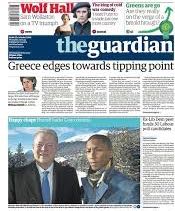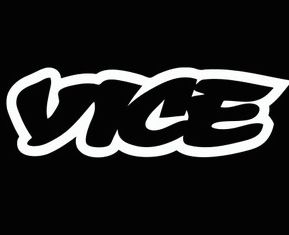For more than 50 years, newspapers and TV dominated news coverage almost everywhere. Then, the internet created the low-cost opportunity to go global. Digital natives rushed to change the news, while publishers and broadcasters started to build online audiences. But it’s coming together in what we have dubbed “News 3.0″: video-rich news channels that will be truly multi-media and global. Companies as diverse as CNN, the BBC, CNBC, Sky News, Fox News, Al-Jazeera, Bloomberg, ESPN, Vice News, Yahoo, Huffington Post, BuzzFeed, Business Insider, Daily Mail, The Guardian, Washington Post, Time magazine, and the New York Times are joining the worldwide fight for online viewers, readers and listeners.

The fusion of traditional and new media will be a major challenge for all these companies. But, perhaps, most of all for daily newspapers everywhere. They are weighed down by historic staffing, production systems – and text. Their discomfort is almost visible on many web sites that, even now, are clones of the print editions.
For all the talk of ‘digital first’, most dailies are still dominated by the economics and culture of print. But, even those with growing online audiences must now make a real strategic leap. They cannot wait for the (presumed) demise of print before matching the skills and resources that their rival broadcasters and digital natives bring to online news. It’s a strategic challenge for newspaper-centric groups across eight fundamental areas:
1. Content
They can start at the beginning: printed newspapers have attention-catching type sizes and designs, but why the same on the web? The sites must reflect the needs of online consumers rather than the traditions of print. They should seek to maximise the impact of genuinely exclusive coverage, while also providing comprehensive links to alternative sources and ‘aggregated’ content. They must exploit the user content and engagement that is at the heart of digital media.

These changes require substantial change in newspaper organisations but there is a lot to play for. From the turmoil of news fragmentation, they really could use aggregation to re-create a world where readers/ users again become dependent primarily on individual news and information ‘channels’. But it requires a change in mindset.
Daily papers have long been the emperors of news and have traditionally fooled themselves into believing that most (if not all) of their content was equally valued by readers. Jeff Jarvis, a professor of the City University of New York, tells newspapers: “Do what you do best and link to the rest. There’s little sense wasting your time writing the 25th-best account of a story when it will appear on the third page of a search request and in only a few tweets; mediocrity and repetition don’t pay anymore, at least not for long. But there is considerable value in creating the best, for others will end up linking to you.”
Jarvis’s “concentrate on the best” approach may also be the key to being able to maintain investigative newspaper-centric journalism, while still reducing overall content costs. And US ‘explainer blogs’ are innovating with reported interviews that are complemented by the full blow-by-blow video of the interview itself. There is obvious scope for long and short versions of specific major stories as a way to maintain broad audiences.

Beyond that, news sites should remember what so many readers have always liked about newspapers: the serendipity of coming across something they weren’t looking for and didn’t expect to find. They might follow the lead of software developer Random which aims to change the way readers discover content by injecting an element of surprise. Once you start reinventing the news business for digital – instead of tweaking age-old newspaper practices – many innovations become possible.
2. Frequency
Daily newspapers are accustomed to a world where everyone knows the frequency with which content is offered to readers. But online is different and audiences have to be cultivated and ‘trained’ to become habitual users. Decades ago, the first ‘rolling news’ broadcasters soon realised it was essential to divide the day into specific programmes and bulletins in order to grow the viewing habit, and online news media needs to learn from that.
That’s the thinking behind the recent decision by News Corp UK’s The Times to develop an edition-based digital publishing model that will see its website refreshed at set times throughout the day, rather than updated continuously (i.e. randomly). The proposed new publishing schedule is understood to include morning, lunchtime and afternoon editions, with between three and four editions a day.
The erratic online scores of many newspapers underline the importance of what broadcasters will think as ‘scheduling’, in order to build audiences. It will create obvious ‘peak time’ appeal for advertisers. But, scheduling is only the start of the broadcaster skills which newspaper groups need.
3. Video/ audio

Video will become the online battle-ground because that is how most audiences have become accustomed to consuming news on TV and digital. And the success of the one-minute summaries by the BBC and New York Times shows that video news has very broad appeal, even for upmarket audiences.
Newspaper-centric companies are in a race not only to shift resources from print to digital but also to build-up substantial video content to compete with TV news and other providers like Bloomberg, WNBC and Reuters (which recently announced plans for a consumer news channel).
Many newspapers are now producing some video but not nearly enough. Perhaps, one of the most ambitious recent developments has been the New York Times deal with US public broadcaster PBS’ prime time NewsHour under which they will share video journalism. It follows The Washington Post’s agreement with TV station WUSA 9 allowing “video reports, and some live video streaming coverage to appear on The Post’s website.” These, like the News Corp UK and Axel Springer online deals for major league football highlights, are the early signs that video news is gaining traction.
For newspaper traditionalists, the ultimate heresy is to say that video will become more important than text on most of these sites.
It’s a skills race that digital-only operators like BuzzFeed, Huffington Post and Vice seem to be taking in their stride. And, now, it extends to podcasts and online radio. Spurred by last year’s 12-part murder mystery “Serial”, which has been downloaded or streamed 68m times, no fewer than 17% of Americans have reportedly listened to a podcast in the past month. The trend has been boosted by the growth of mobile and of radio itself. Audio is made to be consumed on the go. It implies that News 3.0 channels could include a wide range of online ‘talk radio’. As if you couldn’t guess, BuzzFeed is all over it: “We like to connect with audiences in every format possible. We’re on every social media platform and we’re just kind of experimenting with everything we possibly can.” But they’re not the only ones. The rapid growth of digital radio in cars across the world will increase its importance to news companies.

4. Platforms/ brands
One of the biggest arguments to support ‘responsive design’ is that web visitors are increasingly viewing sites from a number of different devices and, therefore, they shouldn’t have to re-learn how to navigate your site each time. After all, US research shows that almost 70% of smartphone users now consume news on their phones. But are we getting it the wrong way round, by making the same content essentially fit every different platform?
So, ,just as there are increasing numbers of mobile-only digital services, perhaps news companies should regard mobile as a completely different medium with audiences wanting something quite distinct from that which they consume on a laptop or tablet.
But, then, newspaper companies should also be building new brands and services to meet the diverse reading, listening and viewing requirements of their audiences. It’s another break from the past idea of a complete ‘take-it-or-leave-it’ printed package of news and information.
If there is a market for Politico and for, say, gardening, motoring and travel coverage, newspapers might consider building these as separate brands with the capacity to become distinct information services. It’s all a question of assessing consumer requirements in a world without the limitations of print. It is also about building a range of brands covering types of delivery (e.g. a one-minute video) or distribution (a mobile newsletter or podcast), or type of coverage (columnists or specialist content). Digital facilitates the fragmentation of audiences, content and brands – again the reverse of a newspaper and something new for the former warriors of print to exploit.

5. E-commerce
Newspaper groups have long sought profit in merchandising, reader offers and mail order. But they should play to their strengths by re-casting substantial areas of specialist coverage to incorporate advice, user recommendations and the ability to ‘click through’ and enquire or purchase.
Whole magazine-like areas of leisure and lifestyle coverage which, arguably, have been used to bulk-up daily newspapers – and also to attract magazine-like display advertising – could now help news sites to generate transformative e-commerce revenues. The real challenge may be doing this in areas like travel and motoring, where newspapers might have to sacrifice traditional print advertising revenues in order to build the future.
6. Social media
All news organisations have to be enmeshed in social media because it is where so many of their readers/users live. It is the key to engagement and a source of content, distribution – and competition. Facebook, Twitter, LinkedIn, and SnapChat increasingly see themselves as platforms for news and information. And this is where news providers must have a clear view of the value of their own content.
They must collaborate with social media but should consider reserving their exclusive “branded” content (wholly or mainly) for their own platforms. In an ideal world, the major news providers would incorporate social media into their sites and vice versa.

BuzzFeed, the world’s largest digital-only news service, is unambiguous about its support for social media. Its head of distributed content said recently: “I think there’s a good chance that, in 5-10 years, the internet is going to look really different…And one of those trends might be that people consume media within the places where they’re also networking with their friends. We just want to figure that out and figure out what people like and people share, and establish an audience in those places and show that we’re the best at making things that people love to share.”
That concept of contributing content to ‘public spaces’ over which they have no control, represents a challenge for newspaper-centric companies. But like owning-up to the not-so-special content that has long filled up the print, they should openly collaborate with the tech operators that dominate their readers’ lives. Anything else is, well, not mainstream.
7. Business model
Then, there is the little question of how newspaper groups can profit from digital media. It is, of course, ironic that two of the daily papers making the early running in the global news race (The Guardian with 120m monthly uniques, and the New York Times, with 70m) have seldom been consistently profitable in print. Perhaps they are, therefore, more patient in the search for a new business model. Although The Guardian, in particular, has successfully built a global online audience, spurred by its widely-acclaimed coverage of Edward Snowden, its 800+ journalists are the cosy sign of a very traditional newspaper cost base.
It was the advertising boom that weakened publisher relationships with readers and, then, made it difficult for these once-bloated operators to cope in a world where the engagement of readers/users matters most. They now have to come to terms with advertising sales based on data and the real-time measurement of audiences rather than the ‘client takes the risk’ of print display ads.

For all the talk of paywalls, it is already clear that most news providers will simply not be able to depend on readership revenues. News is something that most readers do not now expect to pay for. That is underlined by the news role of social media. Even the membership schemes being introduced by daily newspapers may become short-run experiments. Most news will be funded by a combination of advertising and e-commerce. Perhaps the newspapers least stressed by profitability will again be the exceptions.
One early indication of change may come soon from the New York Times which is expected to announce that its ‘NYT Now’ mobile app will drop its $8 per month subscription and be free. What Apple named as one of the best apps of 2014 has so far achieved only 20,000 sales. The moves towards free services may be hastened by the growth in global audiences, new advertising markets – and free online competitors as diverse as The Guardian, Daily Mail, Huffington Post, Vice, and BuzzFeed.
News groups should not, though, under-estimate their strengths as potentially powerful digital brands. But they need to abandon their traditional sense of ‘control’ and seek partnerships, collaborations and alliances with companies that can help embed their services into the lives of readers/users.
The fact that the hyper-experimental Washington Post (48m monthly uniques – 63% up in the past year) is now owned by Amazon’s Jeff Bezos can be expected to lead to some pioneering media-tech-retail deals. And networks of national news providers will join together to compete globally. Strong national TV news companies like CBS, in the US, and ITN, in the UK, could establish global online brands with, say, the Washington Post, the Sydney Morning Herald, or the UK’s Daily Telegraph.

Such alliances, which would challenge the the traditional reluctance of monopoly-minded daily papers to share anything at all, may have already started (albeit, tentatively) with the recent announcement that The Guardian, the Financial Times, CNN International, Reuters, and The Economist have pooled their digital advertising space. But it has nothing to do with content – or a unified global brand. It may be only a matter of time before Rupert Murdoch’s News Corp brings together an online network of The Times, New York Post, and The Australian. Perhaps that could become a single global brand to match the BBC (105m monthly uniques – almost 30% in the US) and Huffington Post (110m monthly uniques).
Nobody knows what Vice’s recent deal with HBO (which includes a daily TV news programme) will mean for the global news race. But one to watch is the US-dominated news leader Yahoo which last year recruited US broadcasting star Katie Couric as “global news anchor”, and which has screening deals with Sky News and ABC. And will global print brands (like,say, the magazines Cosmopolitan, GQ, and Vogue) launch co-branded news services for their followers?
8. The paper
The fast-growing digital news market dictates that many newspaper groups should now segregate digital and print. Everything about the content, technology, marketing, staffing, and economics of these 21st century news channels will eventually be quite different. So, sharing large numbers of staff across print and digital will become an obstacle to long-term success.

Even an early online success like the UK’s Daily Mail – which now has 225m monthly uniques, 25% in the US – will increasingly feel the disadvantage of sharing management and journalism with its dominant daily newspaper. Digital natives have re-written the rules of content staffing and advertising, so it’s no wonder that BuzzFeed (now 200m monthly uniques) reached profitability before the 700-journalist MailOnline, despite having a smaller audience.
In another indication of cultural change, the UK’s most profitable daily newspaper, the Daily Telegraph (76m monthly uniques) has been embroiled in a row with its journalists over vetoed coverage that was deemed hostile to one of its major advertisers, HSBC bank. While news groups have to manage such issues with sensitivity, it is clear that a dependence on advertising revenues will inevitably drive some change in journalistic approach. It’s a just bit more complicated than the current debate about the ethics of native advertising.
As print revenues decline, the management task becomes ever more tricky. BuzzFeed founder Jonah Peretti audaciously counselled the New York Times recently: “If you discontinue (print), you’re going to have your most loyal customers really upset with you.” The natural answer is for the printed newspaper to charge a higher price so that (perhaps) it can be viable just with its most loyal and committed readers. The point is that, if you’re going to print a newspaper, make it for people who are already obsessed with it.
Recognise the fundamental divergence of print and digital. Or else.
Jeff Bezos’s 4 lessons for daily newspapers




